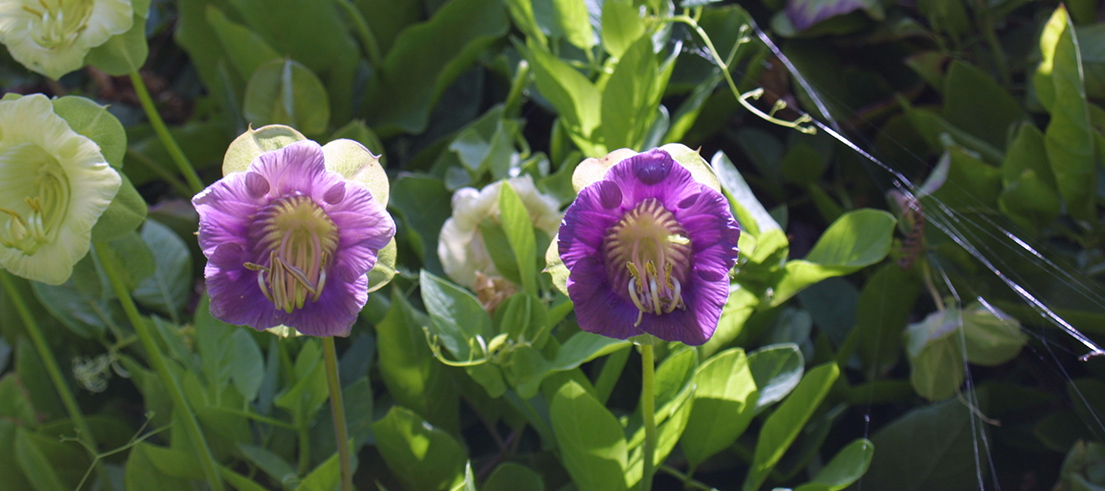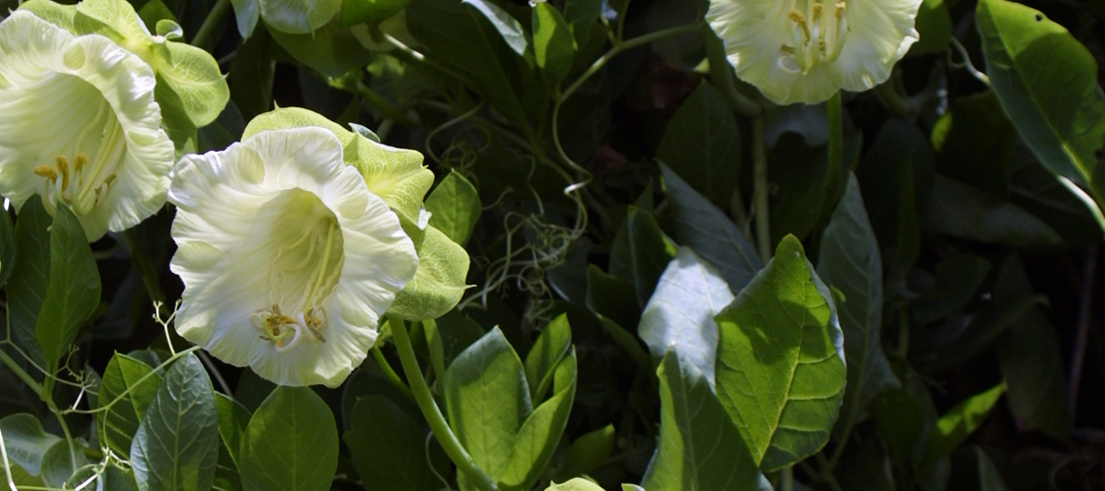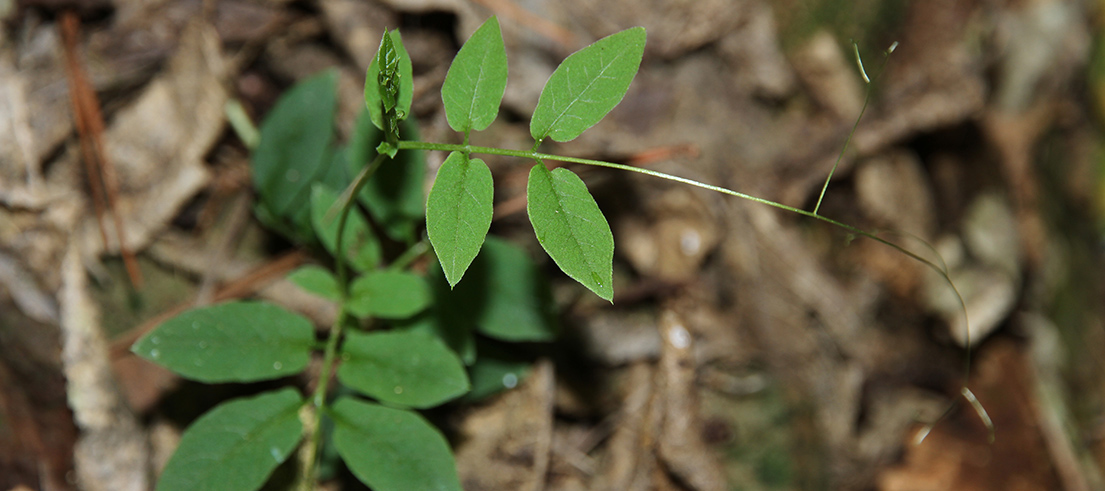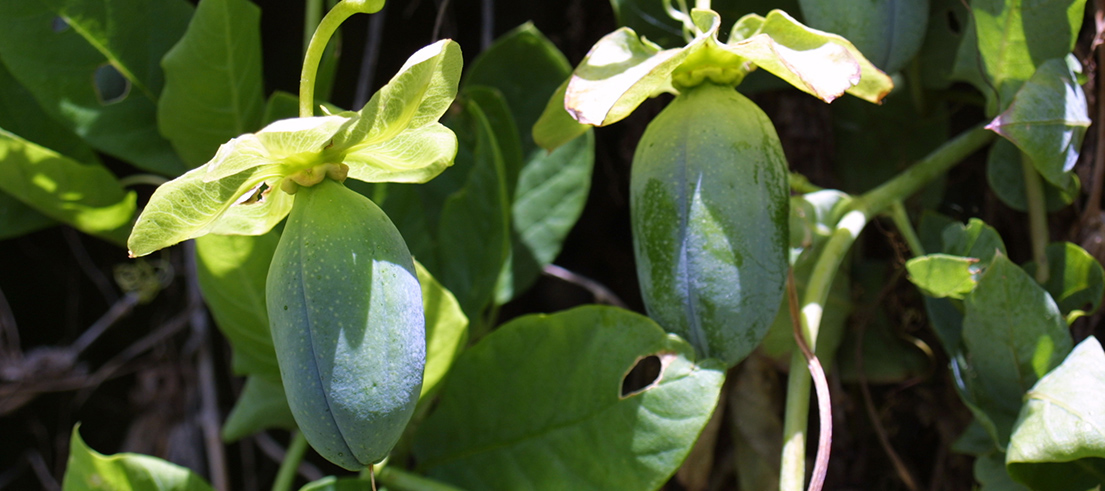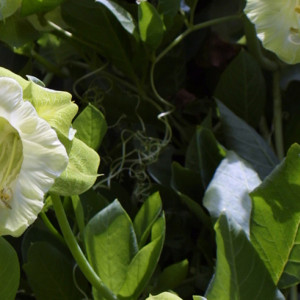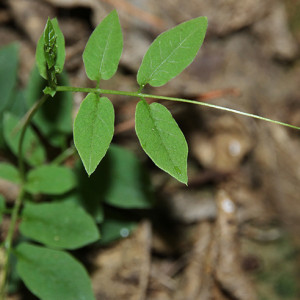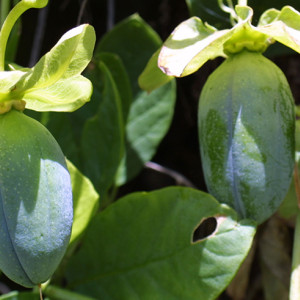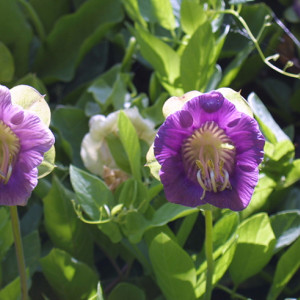Cathedral bells is a perennial woody vine with clawed tendrils and purple flowers that smothers native vegetation.
Description
- Flowers are trumpet-shaped, purple, and appear in spring.
- Seed capsules are less than 95cm long and ripen in autumn.
- Seeds are papery and winged.
- Seeds dispersed by water, wind and gravity. Vegetative spread from layering and tubers.
- Human-mediated dispersal through deliberate plantings.
- Habitats include riparian margins, forests and scrub.
What you need to know
Smothers native vegetation and prevents seedling establishment.
Management approach
This is a declared pest managed under the Canterbury Regional Management Plan 2018 – 2038 (PDF file, 10.6MB) within the site led programme.
Site led
Exclude, eradicate, contain, reduce or control a pest within a specific place to the extent that doing so protects the values of that place.
Cathedral bells that occur outside site led areas designated under the Canterbury Regional Pest Management Plan 2018 – 2038 are a land occupier's responsibility and are to be managed via a community led approach.
Cathedral bells is an unwanted organism regulated under the National Plant Pest Accord.
Rules
Any species declared a pest cannot be sold or be in a place where plants are being sold. Pest plants cannot be propagated, bred, multiplied, communicated, released, caused to be released, or otherwise spread.
Control
Physical control
Dig out.
Plant parts requiring disposal: all parts.
Contact your local council for appropriate disposal locations.
Chemical control
Stump swab (all year round): cut vines as close to the roots as possible, and treat rooted ends liberally with a product containing 100g picloram +300g triclopyr/L (100ml/L) or a product containing 200g 2,4-D+100g dicamba/L (200ml/L) or picloram gel or dicamba 50g/L (400ml/L).
Spray (spring-summer): a product containing 200g 2,4-D+100g dicamba/L (120ml/10L) or dicamba 50g/L (24ml/L).
Spray (spring-summer) from ground level to 2m high: a product containing 100g picloram+300g triclopyr/L (60ml/10L + penetrant) or triclopyr 600 EC (60ml/10L + penetrant) or triclopyr 120g/L (250ml/10L).
Biological control
Biological control is currently not available for this species.

